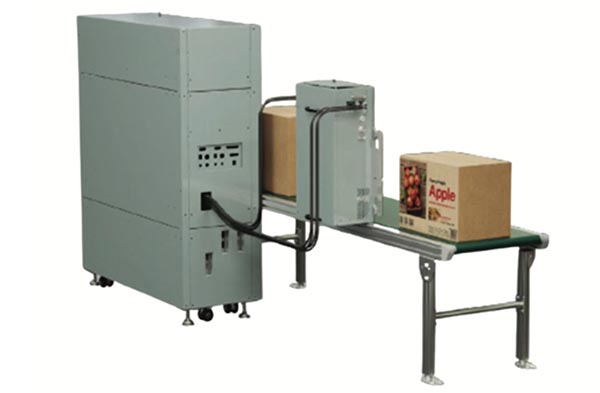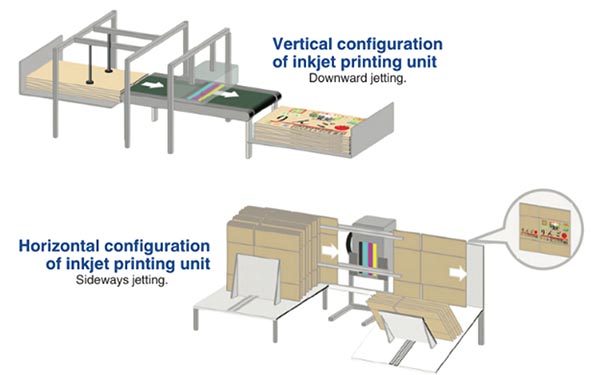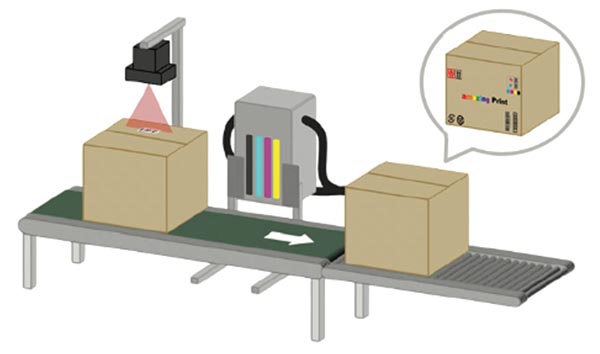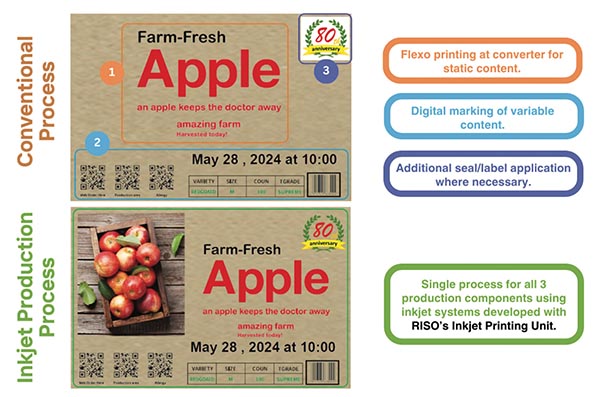This article is sponsored by RISO as part of Inkjet Insight Product Spotlight series. In preparing this article, the Inkjet Insight Product Spotlight editors conducted original, in-depth research on RISO’s printing unit. This Product Spotlight describes what the editors feel are the product’s strengths in the marketplace. RISO reviewed the final article for accuracy but had no editorial control over the content.

(Watch Elizabeth Gooding’s video interview with RISO’s Satoshi Aoki here.)
One of the fascinating things about inkjet technology is how many different types of work can be accomplished with the same printhead when effective product strategy is supported by focused research and development teams. This principle has been demonstrated by the R&D division of Riso Kagaku Corporation (RISO).
RISO, was founded in 1946 as a mimeograph printing company in Tokyo Japan. It now employs, employs over 1,500 people across 25 worldwide subsidiaries. The company recently celebrated their 20th anniversary of selling single-pass inkjet printers.
RISO has leveraged their foundational inkjet technology, and experience with bringing their inkjet office printer, ComColor and VALEZUS sheet-fed, light production to market, to develop a new integration solution for the packaging market.
Introducing the RISO Integlide for Packaging System Development
Unlike RISO’s previous market entries that are offered directly to print service providers, in-plant printing operations, and departmental printer/duplicator buyers, the new RISO inkjet printing unit, marketed as Integlide, is intended for OEMs and other inkjet developers and integrators. The target customer for Integlide is expected to integrate RISO’s inkjet technology with their own production lines, or develop a complete corrugated packaging press, depending on their needs.
The Integlide inkjet printing unit is configured with rugged piezoelectric, recirculating printheads designed by Toshiba Tec Corporation, which are market-proven in industrial applications like ceramic tiles. Intended to serve the needs of the packaging market, the heads can be configured to print horizontally or vertically depending on the configuration of the conveyor and desired side of the box to decorate. To deliver horizontal printing capabilities, the heads must deliver much higher ink pressure than that used for RISOs other single-pass inkjet applications.
With 2-inch-wide print heads arrayed in a staggered pattern, Integlide can support a top resolution of 300 x 600 dpi and a standard resolution of 300 x 300 dpi. It is meant for printing on monochrome or CMYK color on uncoated substrates without the need for pre-treatment. It can deliver a print width of up to 310 mm (12.2-in.) and a maximum print speed of 30 mpm (98 fpm). This speed capability is well-matched for conveyor systems used in packaging lines.
The long life and durability of the printhead array make it an economical foundation for integrators. RISO’s Satoshi Aoki, Manager, Business Planning Section NS Business Promotion Dept. says, “Depending on the print rate of images, we believe Integlide can print the equivalent of more than 10 million pages.” Of course, in a corrugated printing environment where substrate warping is common, the press developer must provide a suitable transport to prevent printhead strikes. The media thickness that can be supported is also dependent on the design of the transport.
RISO also supplies the oil-based inks for Integlide. The fundamental characteristics of an oil-based ink, as compared to water-based, allows them to become completely dry on contact with porous substrates. This eliminates the need for a dedicated drying unit, further improving the economics for the integrator, and reducing energy requirements for the end-user. “Oil-based inks offer a difficult-tobeat balance of easy operation due to long nozzle open time, and suitability to absorbing paper-based substrates used ubiquitously for transport packaging” says Mark Bale of DoDxAct Ltd.
One common concern with petroleum-derived oil inks and other hydrocarbon solvent ink options used with inkjet presses is that they can contain significant amounts of Volatile Organic Compounds (VOCs), which are harmful to the environment. Users of oil inks for corrugated applications have therefore been changing over from petroleum distillates to become mineral-oil-free. RISO’s ink is characterized by the use of plant-derived materials and low VOCs. “Our oil-based pigment ink is designed with careful selection of materials and safety in mind,” says Mr. Aoki. “It has a proven track record of use in offices and schools and can be used in situations where consideration of the work environment is required.”
Of particular benefit for packaging converters is the inherent water and scratch resistance of oil-based inks. Use of pigment, as compared to dye, contributes to longer color fastness. As the demand for digital packaging increases, and more companies vie to take advantage of this market opportunity, RISO’s Integlide can support rapid development of entry-level corrugated solutions for small format sheetfed printing (Figure 1) and direct-to-package decoration (Figure 2). Integlide has also been tested on additional materials such as craft paper, paper bags, and padded envelopes. Integrators can leverage Integlide to build solutions for any application using uncoated media where its speed, resolution and ink characteristics are a match for requirements.

Figure 1. Offline printing on corrugated board or (flattened) folding carton substrates.

Figure 2. Direct-to-package inkjet printing configuration for integration with product packaging line.
Packaging Market Opportunity
Growth in the overall packaging market is driven by a growing worldwide population and the increased propensity for that population to order products online for in-home delivery. There are additional consumer trends that are driving change in the production process for packaging. Consumers have shown a strong preference for packaging that is “right sized” for the product in order to reduce waste and fillers, and that makes use of materials that are recyclable, reusable, and non-toxic. Brands must design packaging that drives retail awareness with in-store shoppers while providing a positive “unboxing” experience for on-line shoppers. An array of differing regional regulations related to disclosures on packaging has the impact of driving down the average order size.
Taken together, these trends drive the need for more versioning of packaging to fit product sizes, delivery points, regulatory requirements, and even to enable personalization and on-packaging advertising. Digital printing, specifically digital inkjet, is the most cost-effective way to deliver these capabilities in a single step even for small jobs. Printing digitally, directly on the package shortens the production timeline while reducing printing costs for versioned or personalized on-package decoration (see Figure 3).

Figure 3. Comparison of multi-step conventional process to single-step inkjet process enabled by RISO Integlide.
With some other print markets in decline, the corrugated and folding carton packaging markets are attractive to a wide array of print-service providers seeking a foothold in this market, as well as brands looking for direct to packaging printing solutions to integrate with their production lines. While dedicated packaging operations have an array of large, direct-to-corrugated board options to choose from, these products are physically very large and require significant financial investment. Cost effective, direct to package inkjet and entry-level direct to corrugated board solutions are more limited making RISO Integlide an attractive way for integrators to quickly bring new solutions to an underserved market.
Availability
The RISO Integlide is currently in the beta-testing phase. Mr. Aoki shared that RISO is in the process of testing with a Japanese inkjet integrator. “We have installed the solution from this company to an end-user. We are also preparing to test with a company in Europe.”
RISO is planning a staggered release. Integlide for vertical printing will be introduced first in Japan towards the end of 2024. It will be introduced in Europe and North America by the middle of the following year. RISO recently demonstrated Integlide at drupa 2024 at the Toshiba Tec Corporation stand.















Discussion
Only verified members can comment.